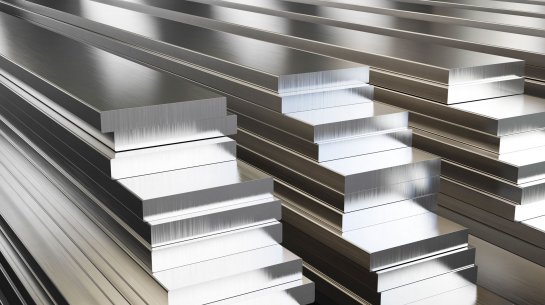News - 27-10-2022
Aluminum in construction
Environmental, economic and aesthetic benefits of using aluminum in architecture and construction
Durability
Aluminum's durability is probably one of the most important qualities of the metal when used in construction
Aluminum building products are made from alloys that are weather resistant, corrosion resistant and resistant to the harmful effects of UV rays. This ensures optimum performance over a very long life. Tailored alloys can also further improve corrosion resistance.
This makes it possible to use aluminum profile sheets in the long term without expensive service and maintenance work.
This provides a good overall economy in construction.
Flexibility
Aluminum's flexibility and malleability guarantee virtually unlimited design potential.
Extrusion offers almost endless possibilities for shapes and forms, allowing designers to integrate numerous functions into single profiles. It can be formed, welded, screwed and cut into dynamic 3-D shapes.
Rolled aluminum products can be produced flat, curved, formed into cassettes or clamped together with other materials.
In addition, aluminum can be sawed, drilled, riveted, screwed, bent, welded and soldered in the workshop or on the construction site.
Lightness and strength
The high strength/weight ratio of aluminum makes it possible to design lightweight structures with exceptional stability.
The use of aluminum gives architects the means to meet the required performance specifications while minimizing foundation costs.
Thanks to the inherent strength of the metal, aluminum window and curtain wall frames can be very slim, maximizing solar gain for given exterior dimensions.
In addition, the light weight of the material makes it cheaper and easier to transport and handle on site and reduces the risk of occupational injuries.
Aesthetics
Aluminum provides unique development opportunities for creative architectural solutions in construction
This is of course due to the flexibility of the material, but also the many options for surface finish and colours, such as anodizing or coating, ensures that the high aesthetic demands of architects can be met.
By alloying aluminum with another metal, you change the properties of the aluminum and add e.g. strength, shine and/or suppleness.
Surface treatments also help improve the material's durability and corrosion resistance, as well as providing a surface that is easy to clean.
Maximizing the windows' transparent areas by using slim frames can also contribute to optimizing the incidence of light.
This increase in natural lighting is beneficial for occupant comfort and well-being, while reducing the need for artificial lighting, contributing significantly to the building's sustainability.
Energy efficiency
In addition to the fact that slim frames result in optimal light incidence, they also provide optimal utilization of the sun's heat.
In addition, the high reflectivity of some aluminum alloys makes it a very effective material for light control.
Aluminum solar collectors can be installed to lower energy consumption for artificial lighting and heating in winter, while aluminum shading devices can be used to reduce the need for air conditioning in summer.
Economy
A large part of a building's finances is related to operation and maintenance
Apart from routine cleaning for aesthetic reasons, neither raw nor treated aluminum requires any kind of maintenance, which translates into a large cost advantage over a product's lifetime.
The maintenance freedom guarantees unlimited use and the possibility of a reliable cost analysis over the entire service life.
Thanks to the corrosion-free material composition, no security or value-preserving measures are necessary.
Recycling
A significant amount of waste construction materials goes to landfills - others are recycled for the benefit of the environment, economy and society.
Aluminum can be reused again and again without affecting the quality - and recycling aluminum only results in a very small CO2 footprint.
Recycling aluminum requires only 5 percent of the energy required to produce the primary metal.
Since almost all aluminum used in construction is recycled, the considerable energy invested in the production of primary aluminum can be reinvested in other aluminum products. The original energy investment will therefore not be lost.
75% of all aluminum ever produced is still in use.
By recycling 1 ton of aluminum, the environment is saved approx. 10 tonnes of CO2, which is a much higher CO2 factor than for other metals.
Since 1980, the aluminum recycling industry has quintupled its annual production of metal from scrap, from 5 million tons to nearly 25 million tons in 2015.
Norwegian Hydro has launched the aluminum products Reduxa (max. 4 kilos of CO2 when producing energy from hydropower) and Circal, which consist of approx. 75 per cent recycled aluminium.
Globally, the recycling of aluminum saves more than 100 million tonnes in CO2 each year.
